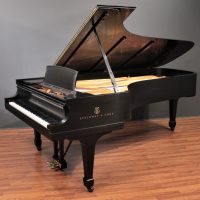I play the piano for services at church about once a month. It’s something I’ve done off and on throughout life starting with chapel services in high school. Pretty much every time I play in a situation like that, I’m amazed at the thoughts that run through my head. And after chatting with other pianists and organists, it sounds like I’m not alone in some of them. So if you’ve ever wondered what that person playing music in front of church is thinking, here are some possibilities:
- Oh no, what verse am I on? Am I supposed to play one more? What if I start playing the next vers but I’m wrong and nobody sings?
- Am I playing too fast?
- Am I playing too slowly?
- What verse am I on?
- Did I do enough of an introduction to this hymn for people to be ready to sing and know what they’re supposed to sing?
- Did I play too much of an introduction and people are bored?
- What verse am I on?
- Remember when that one person told me ___ after the service? It was so mean.
- Why do I only think about that one mean person and not all the other people that say nice things?
- How did I get this far into the song without knowing what key this is written in?
- What do other people think about when they are playing?
- Hey, I’m playing this hymn pretty well and I haven’t even screwed… oops. Never mind.
- What verse am I on?
In chatting about this with someone else, I learned a good tip of singing along with the hymn melody but just repeating the verse number. “One one one one one…” So then instead of wondering what verse I’m on I think “Oh man, I forgot to sing the verse numbers! What verse am I on?”




For the Beauty of the Earth
Here’s one I recorded a while back, but in the Lutheran church we generally use this tune in the season of epiphany and call it “As With Gladness Men Of Old”.
In Jon Schmidt’s recording, he has a beautiful cello playing along with it. So in addition to my normal piano-only recording, I also messed around with digital instruments and added in a cello. There’s no video for this but you can hear me playing along with my digital cello attempt. I played that cello line on my piano, recorded the MIDI file for it and then ran it through this program to make it sound like a cello.
I used Bandlab with a free cello VST plugin so it’s all free and doesn’t sound amazing, but it was such an interesting rabbit hole to dive into. For example, check out the Embertone digital instruments and listen to some of those cello samples! Some day I would love to get a really nice piano file and make my piano sound even better.